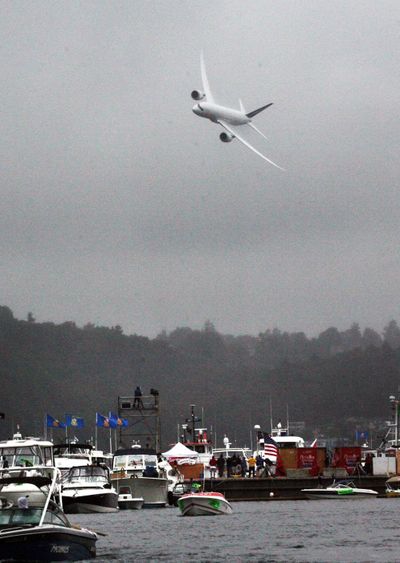Boeing rolls back release of 787 again
Jet maker risks more penalties to placate frustrated buyers

WASHINGTON – Boeing’s sixth postponement of its 787 Dreamliner puts the planemaker at greater risk for paying penalties to customers frustrated by more than 2 1/2 years of delays, analysts said.
Airlines braced for Friday’s move after Boeing signaled in July that the jet might not enter service until early 2011 instead of 2010, said Richard Aboulafia, an analyst at consultant Teal Group in Fairfax, Va. Demands for compensation may rise should the timetable slip again, he said.
“Are there now more unknowns that can trigger another unexpected delay? That is the question,” Aboulafia said in an interview.
Boeing attributed the move to Rolls-Royce Group’s inability to supply an engine on time for flight tests. Boeing has struggled with new materials, parts shortages, redesign work and a manufacturing process that relies more on suppliers to build the first jetliner made mostly of plastic composites.
The new delivery target is the middle of the first quarter, Chicago-based Boeing said in a statement. All Nippon Airways Co., the Dreamliner’s maiden customer, said the holdup was “regrettable.” Rolls-Royce said the delay wasn’t related to a 787 engine blowout on a test bed in Derby, England, which this month forced it to shut the site for repairs.
Boeing already faces compensation claims for late 787s, which will carry 210 to 290 passengers. National Aviation Co. of India, Air India’s state-owned parent, said this month it plans to seek about $840 million for the delays in its order.
“Airlines just keep waiting and waiting,” said Ryota Himeno, an analyst at Mitsubishi UFJ Morgan Stanley Securities Co. in Tokyo. “This new delay will force some tough changes to carriers’ operations.”
Penalties to 787 customers may reach about $5 billion, Myles Walton, an analyst at Deutsche Bank in New York, said before the latest delay. Boeing will probably seek to satisfy those claims through discounts, maintenance agreements, options, purchase rights, delivery-slot availability and other means instead of cash payments, he said.
“There’s a slippery slope here,” said George Hamlin, president of Hamlin Transportation Consulting in Fairfax, Va., and a former Airbus SAS executive. “If some carriers start receiving penalties, all will want them. It’s unfortunate that this is coming piled on top of the earlier delays.”
The 787 initially was scheduled to enter service in 2008. Boeing said last month that it might postpone the handover of the first plane by a few weeks into 2011 because of delays relating to instrumentation and the horizontal stabilizers that keep the jet level. The latest delay won’t affect financial guidance, it said.
“The delivery-date revision follows an assessment of the availability of an engine needed for the final phases of flight test this fall,” the company said. “While Boeing works closely with Rolls-Royce to expedite engine availability, flight testing across the test fleet continues as planned.”
A Rolls-Royce spokesman, Craig Taylor, said on Aug. 17 that the engine failure would have no effect on the 787’s entry into service, and that a modification was already in place for later Dreamliners that would resolve the issue.